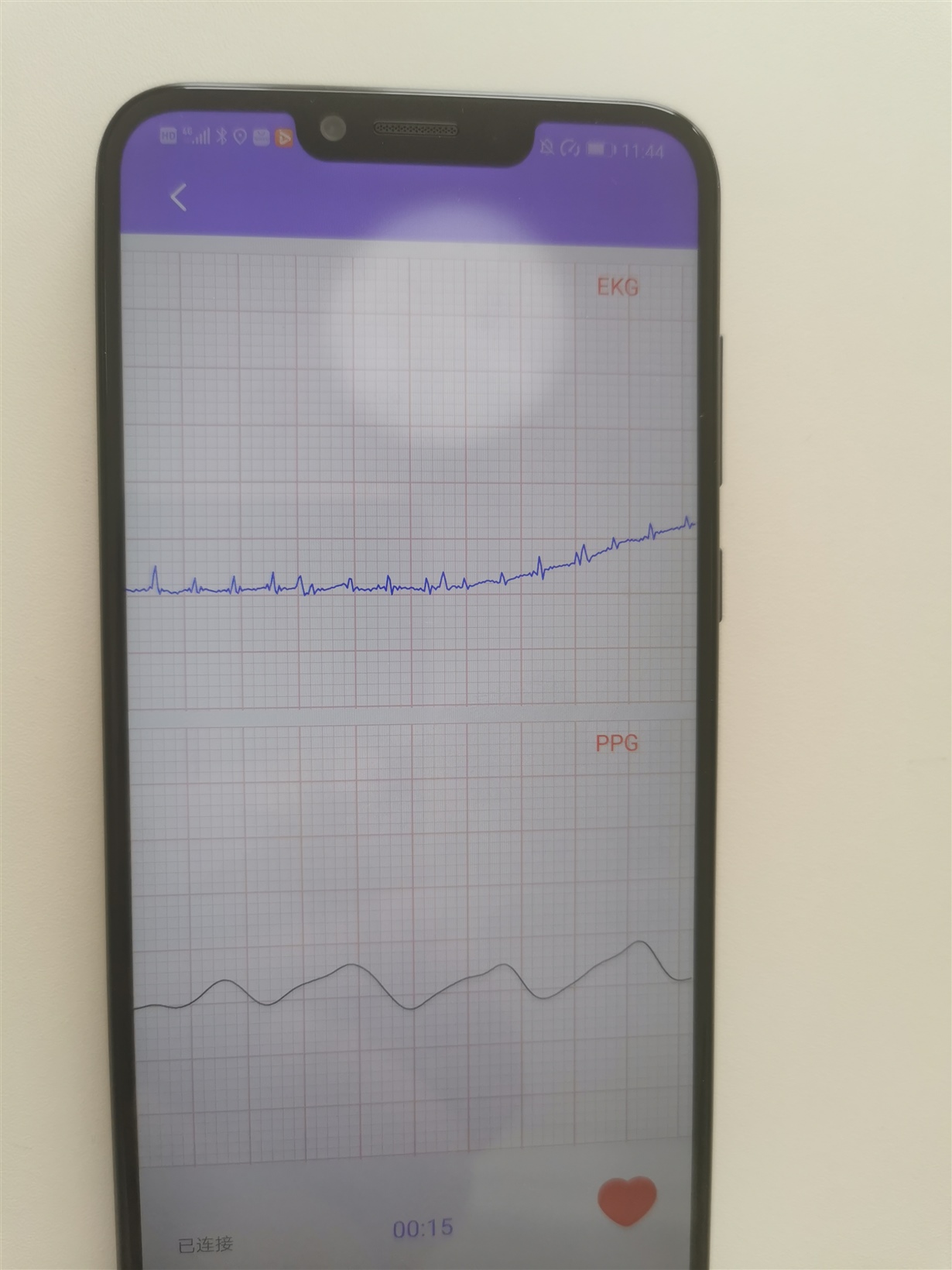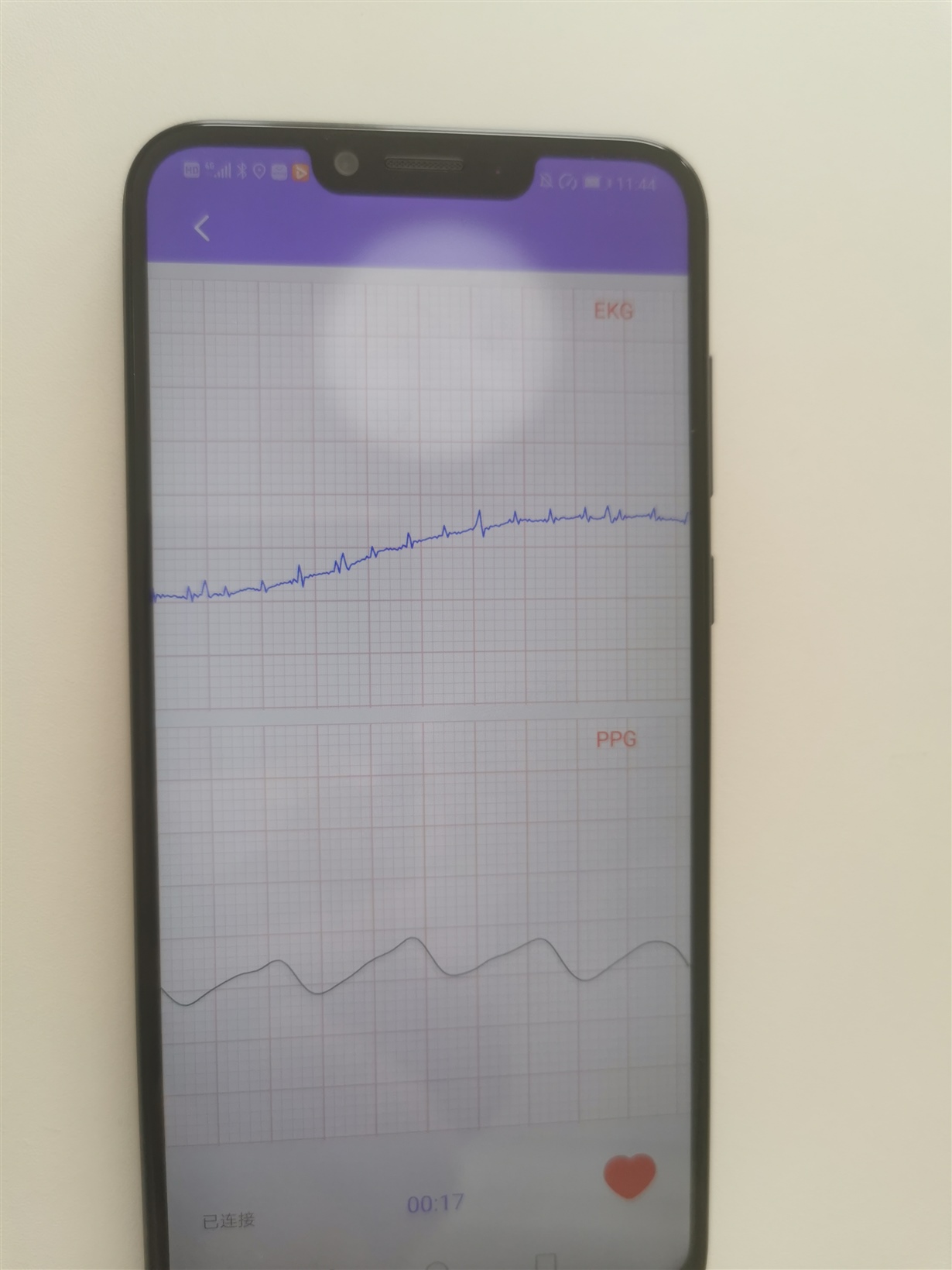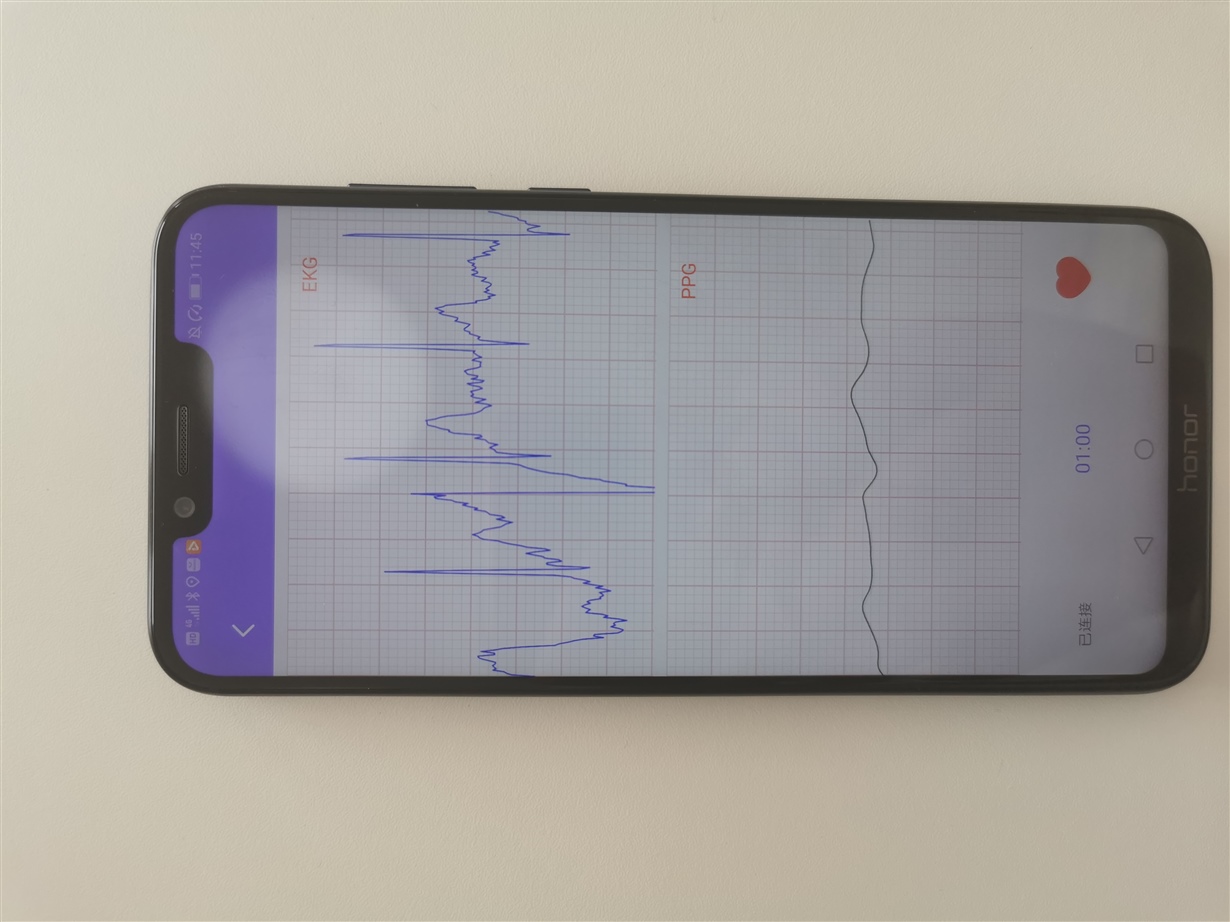Problem Description:
Measurement scenario:
1. The back of the left hand (where the watch is worn) contacts one electrode, and the finger of the right hand contacts another electrode;
During the measurement with ads1292r, the following phenomena will appear:
1. When the measurement is just started, the waveform will be pulled up or down, and it can return to the baseline for normal display after a long time;
2. sometimes, a rectangular wave similar to the truncated top appears all the time
3. sometimes, there will be a very rough waveform near the baseline, and no ECG signal can be seen
4. sometimes, a very clean waveform will appear, which is an inverted triangle signal, and no ECG signal can be seen




